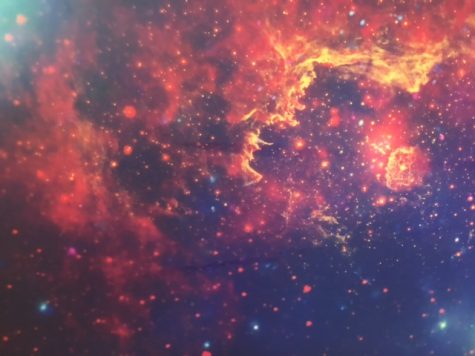Could This New Solar System Be Where We Begin Our Search For Alien Life?
A newly discovered solar system with three Earth-like planets could be our best chance of finding other life in the universe.
Astronomers have discovered a new solar system that hosts approximately seven Earth-sized planets. These planets orbit the central star, known at TRAPPIST-1, may be within a habitable zone; which means that they may fall within a region that could support life as we know it. Naturally, it has been concluded that these planets may be a good area to focus our search for alien life.
The TRAPPIST-1 solar system also alludes to the fact that there may be far more planets similar to Earth than astronomers previously thought. It appears that in every stable spot where a planet could possibly be, an Earth-sized one exists.
“It’s rather stunning that the system has so many Earth-sized planets,” astronomer at the University of Maryland, Drake Deming said. “[It] bodes well for finding habitable planets.”
Astrophysicist Michaël Gillon, who works at the University of Liége in Belgium, was part of a team last year that announced that they had found three Earth-sized planets surrounding TRAPPIST-1. The dwarf star itself is only about the size of Jupiter and is much cooler that Earth’s sun. It is also relatively close to Earth, only 39 light years away in the Aquarius constellation.
Follow up observations provided by the Spitzer Space Telescope showed that what had appeared as three Earth-sized planets, was actually four Earth-sized planets; three of which may be habitable.
According to Gillon and his colleagues in an online publication in “Nature,” if these planets have an Earth-like atmosphere, it is distinctly possible that their surfaces may even host oceans of a water-like liquid.
“It makes me super excited, but space is also super scary and it stresses me out,” sophomore Zoe Speich said.
- TRAPPIST-1b
Orbital Period: 1.15 days
Distance to Star: 0.011 AU
Planet Radius: 1.09 REarth
Planet Mass: 0.85 MEarth
- TRAPPIST-1c
Orbital Period: 2.42 days
Distance to Star: 0.015 AU
Planet Radius: 1.06 REarth
Planet Mass: 1.38 MEarth
- TRAPPIST-1d
Orbital Period: 4.05 days
Distance to Star: 0.021 AU
Planet Radius: 0.77 REarth
Planet Mass: 0.41 MEarth
- TRAPPIST-1e
Orbital Period: 6.10 days
Distance to Star: 0.028 AU
Planet Radius: 0.92 REarth
Planet Mass: 0.62 MEarth
- TRAPPIST-1f
Orbital Period: 9.21 days
Distance to Star: 0.037 AU
Planet Radius: 1.04 REarth
Planet Mass: 0.68 MEarth
- TRAPPIST-1g
Orbital Period: 12.35 days
Distance to Star: 0.045 AU
Planet Radius: 1.13 REarth
Planet Mass: 1.34 MEarth
- TRAPPIST-1h
Orbital Period: 20 days
Distance to Star: 0.06 AU
Planet Radius: 0.76 REarth
Planet Mass: Unknown
Measurements in distance are provided in Astronomical Units or AU’s. Measurements of radius and mass are provided in relation to our Earth.

Her favorite quote is "She wasn't looking for a knight, she was looking for a sword." - atticus.











